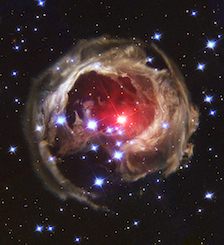
Cosmic Embryo #3: The ART of 3D Sun and Breast Cancer Imaging
NASA Releasing First Views of the Entire Sun on Super Sun-Day [February 6, 2011]
http://www.nasa.gov/home/hqnews/2011/feb/HQ_M11-025_STEREO.html
One always does science as a member of a community, one that extends back to our predecessors on whose work we build, horizontally to our contemporaries, and into the future for those who will in turn build on or disassemble what we have constructed in our understanding of this universe. I had the unusual honor recently of being asked to write an autobiographical chapter on my role in computed tomography. Now scientists are rarely humble before other scientists, especially in the dog eat dog world of competitive grantsmanship, so I have that thick skin one develops to survive. Yet as an avid reader of history of science I’ve learned a bit of humility. Thus I attempted to balance self-aggrandizement with perspective on the rich work of others. The result was:
Gordon, R. (2011). Stop breast cancer now! Imagining imaging pathways towards search, destroy, cure and watchful waiting of premetastasis breast cancer. In: Breast Cancer - A Lobar Disease. Ed: T. Tot. London, Springer: 167-203.
Yesterday 3D Sun hit the news, a beautiful rendition of the entire surface of the rotating sun and its ever changing corona. Two satellites circle the sun in earth orbit, but ahead and behind the earth, continuously providing two views of the sun.
But, you may ask, what on earth does breast cancer have to do with imaging the sun? In 1968 I attended a packed lecture at Hunter College in New York City on the need for interdisciplinary researchers, by Isaac Asimov. I wanted to ask him; “Yes, but who is going to pay them?” I’ve since learned the answer: you do, through your uncertain support of the tenure system in universities. Tenure is often attacked for the deadwood, people who take advantage of it to drift through the remainder of their careers. But for some of us it is a deep privilege, a trust that allows us to do long range thinking. The University of Manitoba granted me tenure “in any department that would have me”, a backhanded compliment of my interdisciplinary proclivities. I am now 100% in Radiology, where my colleagues have been supportive and tolerant of my eclectic interests.
Interdisciplinary research has always excited me, because you get to meet and occasionally work with scientists from so many other fields. I came up with a solution to the “reconstruction from projections” problem, now named computed tomography (CT), in the context of 3D electron microscopy of subcellular particles and immediately saw its application to medicine:
Gordon, R., R. Bender&G.T. Herman (1970). Algebraic Reconstruction Techniques (ART) for three-dimensional electron microscopy and x-ray photography. J. Theor. Biol. 29(3), 471-481.
and later, astronomy:
Gordon, R. (1978). Reconstruction from projections in medicine and astronomy. In: Image Formation from Coherence Functions in Astronomy. Eds.: C. van Schoonveld & D. Holland. Dordrecht, Reidel Publ. Co.: 317-325.
As of today the ART algorithm generates the images in many CT scanners and has been directly cited in 746 other articles (ISI count), which span many disciplines. One of them is 3D Sun. I had brief e-mail exchanges with some of the NASA scientists behind this wonderful effort. Curiously, when the satellites had a relatively small angle difference between them, the coronal features could be reconstructed in 3D:
Saez, F., A. Llebaria, P. Lamy&D. Vibert (2007). Three-dimensional reconstruction of the streamer belt and other large-scale structures of the solar corona. Astronomy&Astrophysics 473(1), 265-277.
Now that they are 180 degrees apart, the whole surface of the sun can be imaged, but the capability to image the 3D structure of the corona has been lost. Supplemental imaging from the earth, or from satellites circling the earth, would help. We could also launch more satellites into earth’s orbit, perhaps in orbits greatly inclined to earth’s orbit, even perpendicular to it. This brings up a curious relationship to the breast cancer problem: how many views do we need to detect just starting breast tumors, at the 2 to 4 millimeter size before they metastasize? This is an important, unsolved problem, since the x-ray dose is proportional to the number of views. So 3D Sun and breast cancer research are intimately entwined.







Comments